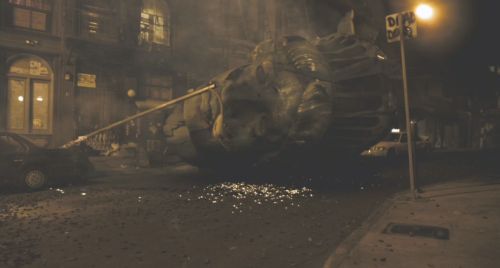Apologies for the absence of material for the website lately; apart from the usual non-filmy stuff, I’ve been working on an article / review for Senses of Cinema which has kept me occupied. Hence the cluster of minor items today as I post a few tidbits I hadn’t had time to address.
One thing I wanted to point out, for the academicy / bloggery type people who read this site, is this article by Kristin Thompson that reaffirms her longstanding argument in favour of the legality of using film stills – rather than publicity stills – in support of film criticism. I’ve relied on her reasoning for a long time, and it still seems sound to me. I just point this out because I still see a lot of books and websites still illustrated primarily with publicity stills (indeed, both the books I talked about in my SOS article rely largely on such stills). I’ve never had any interest in using such stills: I’d rather rely on images that actually come from the movie itself to illustrate my points.
For popular review type websites, use of publicity stills is usually harmless enough, but in the case of academic books, it’s another subtle factor that seems to encourage authors not to worry about close analysis of what is actually on screen (the primary factor in this remains laziness). So I just thought that Thompson’s article was worth a nod. Vive La Film Still!





